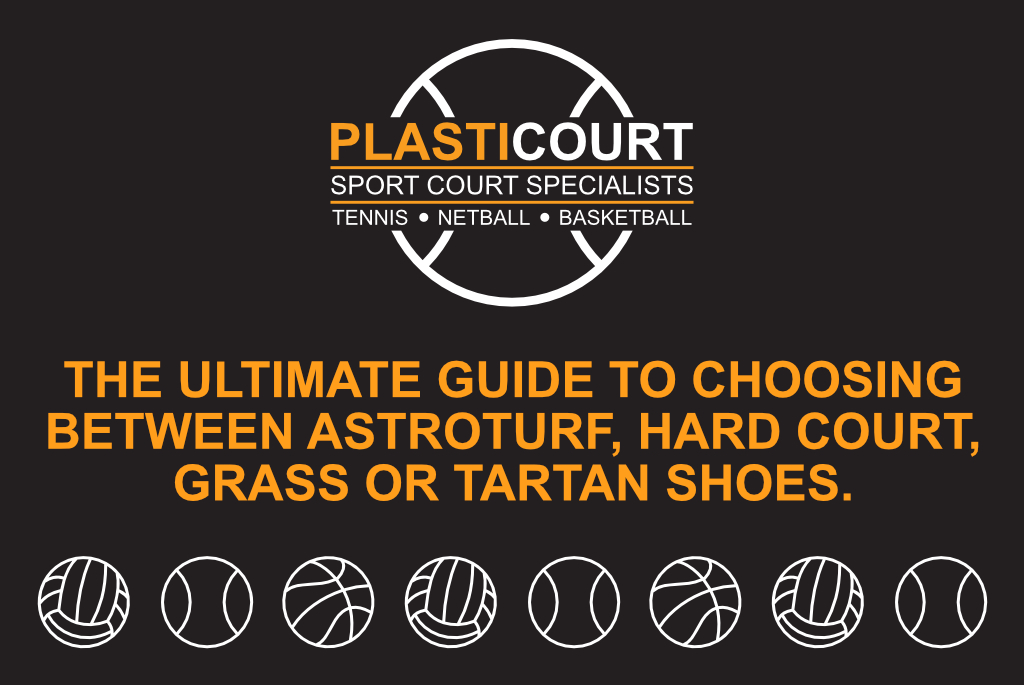
When it comes to sports footwear, one size certainly does not fit all. The right pair of shoes can enhance your performance, provide the necessary support, and prevent injuries. For those who play on different surfaces, understanding the differences between astroturf, hard court, grass, and tartan shoes is crucial. In this article, we’ll delve into the specific features of each type, using provided images for a detailed comparison and discussing the additional surfaces of grass and tartan.
Understanding the Surfaces
Astroturf:
This is a synthetic grass surface that mimics the feel of natural grass. It’s commonly used in sports like soccer, field hockey, and some recreational tennis courts. The surface is firm but can be slippery, requiring footwear that offers both grip and flexibility.
Hard Court:
These are solid surfaces made from materials like concrete or asphalt, often found in basketball courts, tennis courts, and some multi-sport facilities. Hard courts are flat and can be harsh on the joints, necessitating shoes with good cushioning and durability.
Grass:
Natural grass surfaces are commonly found in sports like soccer, golf, and traditional tennis courts. This surface can be soft and uneven, requiring shoes with adequate grip and stability to handle the variable terrain.
Tartan:
Tartan tracks are made from synthetic materials like polyurethane, providing a smooth and resilient surface. They are widely used in athletics and track and field events. Shoes for tartan tracks need to offer excellent traction and lightweight support.
Astroturf Shoes: Designed for Artificial Grass
Tread Pattern:
The sole of the astroturf shoe features a pattern with multiple small, evenly spaced studs or nubs. These provide excellent grip on synthetic grass, preventing slips and falls.
Flexibility:
The studs allow for better flexibility and movement, essential for the dynamic nature of sports played on firmer, synthetic turf. This design enables quick pivots and rapid changes in direction without compromising stability.
Durability:
The materials used in astroturf shoes are designed to withstand the abrasive nature of artificial turf. They are generally made from durable rubber compounds that can endure the wear and tear from constant use on this surface.

Hard Court Shoes: Built for Tough Surfaces
Tread Pattern:
Hard court shoes have a more intricate, wave-like pattern. This design enhances traction on hard, flat surfaces, preventing slipping during rapid lateral movements and sudden stops.
Shock Absorption:
Hard court shoes often include additional cushioning in the sole. This feature is crucial for absorbing the impact from running and jumping on hard surfaces, protecting your joints from excessive stress.
Durability:
The soles of hard court shoes are generally made from high-quality rubber to withstand the friction and wear from the hard court. This durability ensures that the shoes maintain their performance over time, even with frequent use.

Grass Shoes: Optimized for Natural Surfaces
Tread Pattern:
Grass shoes usually feature longer, conical studs or cleats. These are designed to dig into the soft, natural surface, providing stability and preventing slips.
Flexibility:
While providing firm grip, the studs also allow for natural movement and flexibility, which is necessary to navigate the uneven terrain of grass fields.
Durability:
Grass shoes are built to handle moisture and dirt, with materials that resist wear from the natural elements and maintain traction in wet conditions.

Tartan Shoes: Perfect for Track and Field
Tread Pattern:
Tartan shoes often have a smooth, spike-compatible sole. The spikes can be customized depending on the event, providing the best grip and minimal resistance on the track.
Lightweight:
These shoes are designed to be lightweight, allowing athletes to achieve maximum speed and efficiency during races.
Support:
While focusing on being lightweight, tartan shoes also offer sufficient support to maintain foot stability during high-speed activities.

Choosing the Right Shoe for Your Sport
For Astroturf Sports:
If you’re involved in sports like soccer, field hockey, or recreational tennis on synthetic grass, astroturf shoes are your best bet. The grip and flexibility provided by the studded sole will enhance your performance and reduce the risk of injury.
For Hard Court Sports:
For activities such as basketball, tennis, or any sport played on concrete or asphalt, hard court shoes are ideal. The cushioning and traction provided by these shoes will help you stay agile and protect your joints from the impact of the hard surface.
For Grass Sports:
Grass shoes are essential for sports like soccer and golf played on natural surfaces. The longer studs provide the necessary grip and stability to handle the soft, uneven terrain.
For Tartan Track Events:
If you’re a track and field athlete, tartan shoes with customizable spikes are perfect for your needs. These shoes offer the best grip and minimal resistance for optimal performance on synthetic tracks.
Conclusion
Selecting the right shoe for your playing surface is more than just a matter of comfort—it’s a critical factor in your performance and safety. Astroturf, hard court, grass, and tartan shoes are designed with specific features to meet the demands of their respective surfaces. By understanding these differences, you can make an informed choice that will keep you at the top of your game, no matter where you play.
Invest in the right pair of shoes for your sport and experience the difference that tailored footwear can make. Whether you’re sprinting across synthetic grass, maneuvering on a hard court, tackling the uneven terrain of natural grass, or speeding down a tartan track, the right shoes will support your every move.

